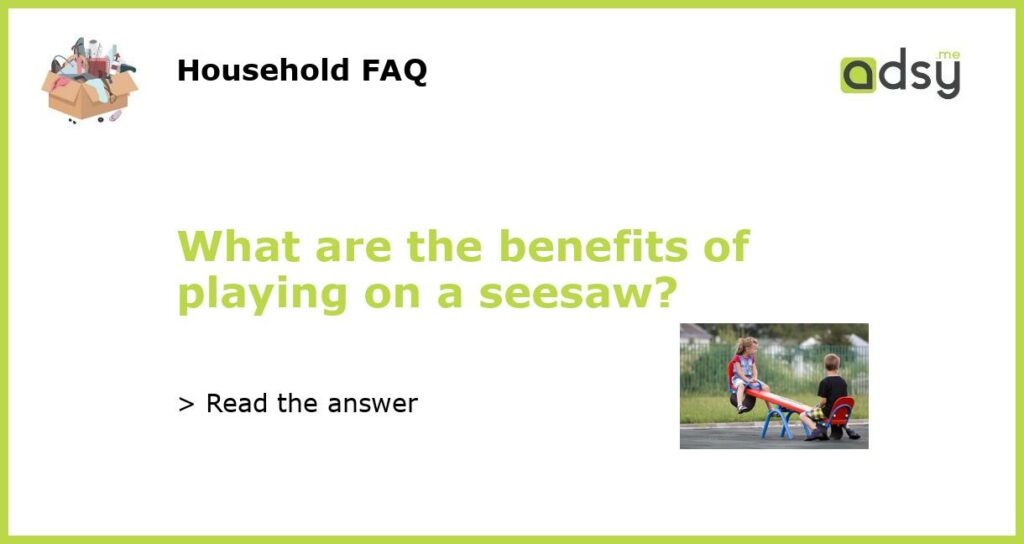Benefits of Playing on a Seesaw
Playing on a seesaw is not only a fun activity for children, but it also brings several benefits to their physical, cognitive, and social development. This simple play equipment has been a staple in playgrounds for generations, and for good reason. In this article, we will explore five key benefits of playing on a seesaw.
Physical Development
Playing on a seesaw helps children develop their gross motor skills. When they push off the ground with their legs to propel themselves up, they strengthen their leg muscles and improve their balance. The back and forth motion also engages their core muscles, promoting stability and coordination.
Furthermore, seesaw play stimulates sensory integration as children feel the sensation of going up and down. This sensory feedback is important for their spatial awareness and body perception.
Cognitive Development
Seesaw play also offers cognitive benefits to children. As they coordinate their movements with their playmate, they learn about cause and effect relationships. They learn that when they push down, their playmate goes up, and vice versa.
This cause and effect understanding is a crucial cognitive skill that lays the foundation for logical reasoning and problem-solving later in life. By figuring out how to use the seesaw properly, children are exercising their critical thinking skills in a playful and enjoyable setting.
Social Development
The seesaw is an ideal play equipment for promoting social interactions and cooperation among children. It requires cooperation and communication between two children for the seesaw to work effectively. They must take turns and coordinate their movements to keep the seesaw balanced.
Through this collaborative play, children learn social skills such as sharing, taking turns, and negotiating. They also develop empathy and consideration for others as they naturally adapt their movements to ensure a balanced and enjoyable play experience for their partner. This fosters teamwork and encourages positive social interactions.
Emotional Development
Playing on a seesaw can have a positive impact on children’s emotional development. The back and forth motion of the seesaw can be thrilling and exciting, which can trigger feelings of joy and happiness. This helps release endorphins, the brain’s feel-good chemicals, promoting a positive emotional state.
Additionally, the cooperative nature of seesaw play can help children develop emotional intelligence. They learn to be patient, considerate, and thoughtful of their partner’s experience. They also learn how to regulate their emotions, as they may need to wait for their turn or adjust their movements to maintain balance.
Confidence Building
Playing on a seesaw can boost children’s self-confidence. As they successfully navigate the up and down motion, they gain a sense of accomplishment and mastery over their body. This can enhance their self-esteem and self-confidence.
Furthermore, the social interactions and cooperative play on the seesaw provide opportunities for praise and positive reinforcement from their playmate. This reinforcement can contribute to a child’s belief in their abilities and strengths.
In conclusion, playing on a seesaw offers a multitude of benefits for children’s physical, cognitive, social, emotional, and confidence development. It is a classic play equipment that not only brings joy and laughter but also fosters important skills and qualities that children can carry with them into adulthood.






